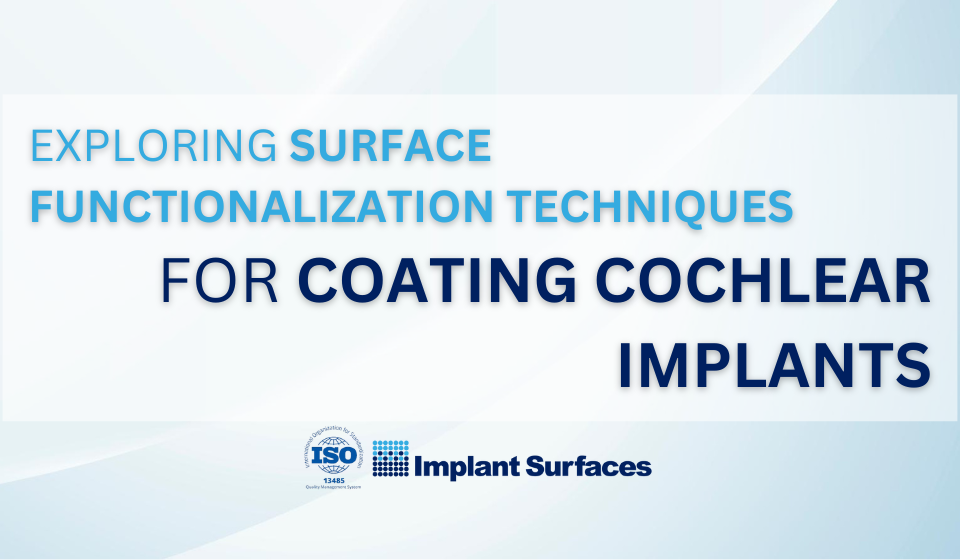
Surface Engineering Approaches for Enhancing Osseointegration in Dental Bridges
May 6, 2024
Advancing Brain-Machine Interfaces: Innovations in Surface Coatings for Implantable Neural Electrodes
May 8, 2024Orthopedic screws play a critical role in stabilizing fractures and facilitating bone healing. However, traditional metallic screws may necessitate a second surgery for removal, posing risks and discomfort to patients. To address this challenge, researchers have been exploring biodegradable coatings that enable controlled degradation of orthopedic screws over time. These coatings offer a promising solution to enhance patient outcomes while minimizing the need for additional surgeries.
Biodegradable Coatings: A Solution to Surgical Complications
Biodegradable coatings provide an innovative approach to orthopedic screw design by offering a temporary implant that gradually degrades in vivo. These coatings are typically composed of biocompatible polymers or ceramics that break down into non-toxic byproducts, eliminating the need for implant removal procedures. By controlling the degradation rate, surgeons can tailor the implant’s lifespan to match the patient’s healing process, reducing the risk of long-term complications.
Polymer-Based Coatings: Enhancing Flexibility and Degradation Kinetics
Polymer-based coatings, such as polylactic acid (PLA) and poly(lactic-co-glycolic acid) (PLGA), are among the most widely studied materials for biodegradable orthopedic screws. These polymers offer excellent biocompatibility and mechanical properties, making them suitable for load-bearing applications. Furthermore, the degradation kinetics of polymer coatings can be fine-tuned by adjusting the molecular weight and composition, allowing for precise control over the implant’s lifespan.
Ceramic Coatings: Promoting Osteointegration and Biomineralization
In addition to polymers, ceramic coatings have emerged as promising candidates for biodegradable orthopedic screws. Materials such as calcium phosphates and magnesium alloys exhibit excellent osteoconductivity, promoting bone ingrowth and osseointegration. Moreover, ceramic coatings can undergo gradual dissolution in physiological environments, releasing ions that stimulate bone formation and remodeling. By integrating ceramic coatings into orthopedic screws, researchers aim to optimize the implant’s biocompatibility and enhance its interaction with the surrounding bone tissue.
Clinical Applications and Future Perspectives
Biodegradable coatings for orthopedic screws have garnered significant interest in both research and clinical settings. Initial studies have demonstrated the feasibility and safety of these coatings in animal models, highlighting their potential for human applications. Moving forward, ongoing research aims to address key challenges such as coating adhesion, mechanical strength, and degradation kinetics to further improve the performance of biodegradable orthopedic screws. With continued innovation and collaboration, biodegradable coatings hold the promise of revolutionizing orthopedic surgery by offering patients a safer and more efficient treatment option.
Conclusion:
Biodegradable coatings represent a groundbreaking advancement in orthopedic implant technology, offering a viable alternative to traditional metallic screws. By harnessing the unique properties of polymers and ceramics, these coatings enable controlled degradation of orthopedic screws while promoting bone healing and osseointegration. As research progresses, biodegradable coatings hold tremendous potential to enhance patient outcomes and redefine the standard of care in orthopedic surgery.




